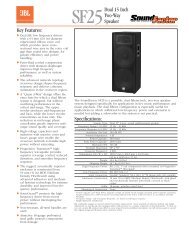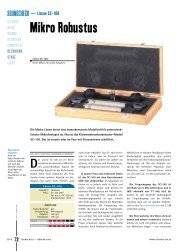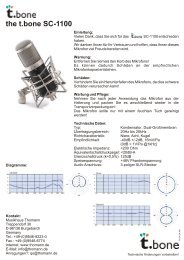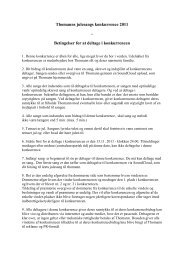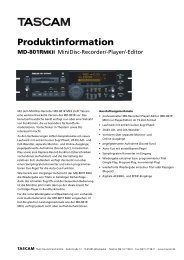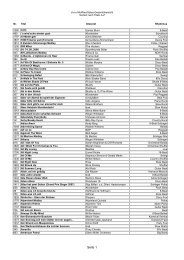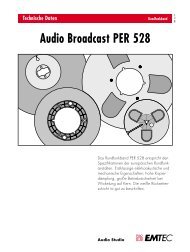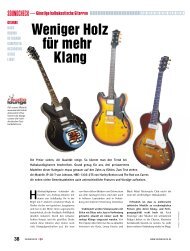Hammerfall® DSP System Multiface
Hammerfall® DSP System Multiface
Hammerfall® DSP System Multiface
Create successful ePaper yourself
Turn your PDF publications into a flip-book with our unique Google optimized e-Paper software.
14. TotalMix: Routing and Monitoring<br />
The Hammerfall <strong>DSP</strong> system includes a powerful digital real-time mixer. RME’s unique<br />
TotalMix technology allows for nearly unlimited mixing and routing with all inputs and playback<br />
channels simultaneously.<br />
Here are some typical applications for TotalMix:<br />
• setting up delay-free submixes (headphone mixes)<br />
• unlimited routing of inputs and outputs (free utilisation, patchbay function)<br />
• distributing signals to several outputs at a time<br />
• simultaneous playback of different programs over only one stereo channel<br />
• mixing of the input signal to the playback signal (complete ASIO Direct Monitoring)<br />
• integration of external devices (effects etc). in real-time<br />
• mixdown of three ADAT inputs to one (realizing two additional inputs)<br />
On page 35 you’ll find a block diagram of the TotalMix mixer of the <strong>Multiface</strong>. It can help to<br />
understand the basic signal flow and routing. It shows that the record signal always stays unaltered,<br />
but can be passed on as often as desired, even with different levels. The level meter of<br />
inputs and playback channels are connected pre-fader (due to the enormous routing<br />
capabilities). The level meters of the hardware’s outputs are connected post-fader.<br />
To call up the mixer start the program Hammerfall <strong>DSP</strong> TotalMix.<br />
14.1 Elements of the Surface<br />
The visible design of the mixer is mainly determined by the architecture of the H<strong>DSP</strong> system:<br />
• Upper row: hardware inputs. The level shown is that of the input signal, i. e. Fader<br />
independent. Per fader and routing window, any input channel can be routed and mixed to<br />
any hardware output (third row).<br />
• Middle row: playback channels (playback tracks of the software). Per fader and routing<br />
window, any playback channel can be routed and mixed to any hardware output (third row).<br />
• Lower row: hardware outputs. Because they refer to the output of a subgroup, the level can<br />
only be attenuated here (in order to avoid overloads), routing is not possible. This row has<br />
two additional channels, the analog outputs.<br />
Every single channel has various elements:<br />
Input and playback channels each have a mute and solo button.<br />
Below each there is the panpot, realized as indicator bar (L/R) in order to save space.<br />
In the window below this, the present level is displayed in RMS or Peak, being<br />
updated about every half a second. Overs are indicated here by an additional red dot.<br />
Then comes the fader with a levelmeter. The meter shows both peak values (zero<br />
attack, 1 sample is enough for displaying full scale) by means of a yellow line and<br />
mathematically correct RMS values by means of a green bar. The RMS display has a<br />
relatively slow time constant, so that it shows the average loudness quite well.<br />
Below the fader, the current gain and panorama values are shown.<br />
The white area shows the channel name, the black area shows the current routing<br />
target.<br />
User’s Guide H<strong>DSP</strong> <strong>System</strong> <strong>Multiface</strong> © RME 21






